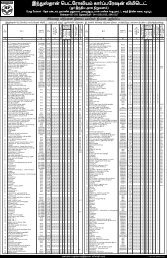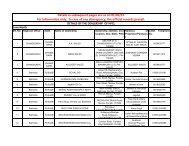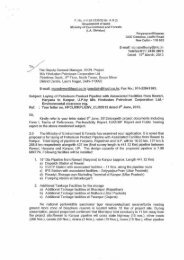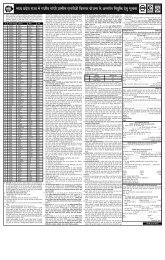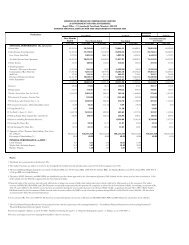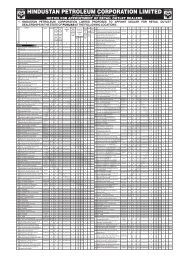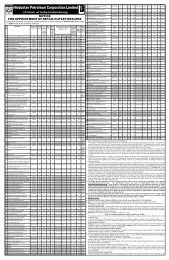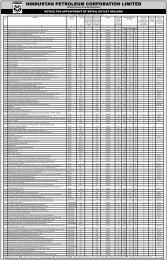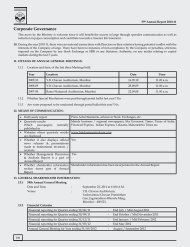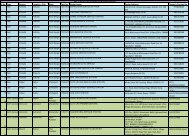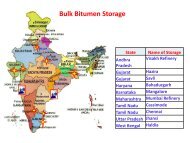HP Bitumen Handbook - Hindustan Petroleum Corporation Limited
HP Bitumen Handbook - Hindustan Petroleum Corporation Limited
HP Bitumen Handbook - Hindustan Petroleum Corporation Limited
You also want an ePaper? Increase the reach of your titles
YUMPU automatically turns print PDFs into web optimized ePapers that Google loves.
Appendix-I : road metals and<br />
materials<br />
The load acting on the piston is recorded and that corresponding to a penetration<br />
of 2.5mm is determined. The ratio of that load to 1360 kg (The value obtained<br />
from a standard crushed stone sample) expressed as percentage is the CBR<br />
value of this material.<br />
CARPET - The term is applied to the wearing surface topping or top course of a<br />
bituminous surface laid in two or more coats.<br />
CHIPS - Small angular fragments of stone containing no dust.<br />
CHOKE - To fill up the voids.<br />
CINDER -<br />
Slag particularly from iron blast furnaces or the accumulation of<br />
clinkers, ashes and cinders resulting from burning coal.<br />
CLAY - A type of soil which contain colloidal scale-like particles which are the<br />
cause of plasticity. Plasticity and dry strength are affected by shape and mineral<br />
composition of the particles.<br />
COHESION - The force that binds the particles of any material together.<br />
CORRUGATIONS - Ripples, waves or unfirm undulations which are liable to<br />
appear in all types of road surfaces.<br />
COURSE - One or more layers of road metal spread and compacted separately<br />
for the formation of the road or pavement. Courses are often referred to in the<br />
order of their laying, as first course, second course, third course, etc.<br />
CROWN - The higher part of the curved surface of the road. Often used to<br />
designate the difference in elevation of the highest point of a roadway and the<br />
edge of the traveled way. Also the highest point on a cross-section, within the<br />
traveled way, usually at the centre.<br />
CRUSHED GRAVEL - Crushed gravel is considered suitable for use in<br />
bituminous mixtures if at least 95% of the particles have one fractured face due<br />
to crushing.<br />
CRUSHED ROCK - Crushed rock is obtained by mechanically crushing quarry<br />
stone, gravel or talus.<br />
31



